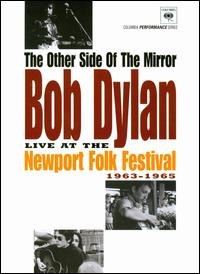
导演:
主演:
上映:
0
更新:
2025-03-15 15:02
剧情:
"Bob Dylan going electric" at the 1965 Newport Folk Festival is one of those epoc..
- 抖音播放
猜你喜欢
2025
0.0分
剧情片
正片
2025
0.0分
剧情片
罗伯特·德尼罗 黛博拉·梅辛 柯斯莫·贾维斯 凯瑟琳·纳杜奇 迈克尔·里斯波利 迈克尔·阿德勒 埃德·阿玛特鲁多 Joe Bacino Anthony J. Gallo 华莱士·朗翰 路易斯·穆斯蒂略 Frank Piccirillo 马特·索维托 Robert Uricola 卡丽·拉扎 贝尔蒙特·卡梅利 布莱恩特·卡罗尔 詹姆斯·西科内 让·克劳德·卢耶 温·赖克特 Robert Arce J
/
<p> 罗伯特·德尼罗饰演两个角色:Vito Genovese和Frank Costello,两个不同的意大利黑道家族的老大,Genovese在1957年试图刺杀Costello,没杀了,但也导致了后者受伤并让出家族老大的位置。</p>
正片
1988
0.0分
剧情片
HD中字
1980
0.0分
剧情片
<p> 领主的女儿进入到修道院里进行修行,可是在修道院里卷进了欲望的漩涡,和放浪的贵族合谋害死了老院长,终于被其他的僧尼所揭发……</p>
HD中字
2024
0.0分
剧情片
雷赛德特 萨莎·卡莱 利奥·梅希尔 莱斯利·格雷丝 艾玛·拉莫斯 夏琳·克鲁兹 安妮·莱德曼 德雷亚·卡斯蒂洛 艾莉森·萨利纳斯 基马亚·泰斯 加布里埃拉·苏罗贾万 因蒂戈·蒙泰兹 肖恩·科迪·卡尔弗特 纳塔伊·卡罗尔 朱利安·卡维特 布伦达·卡明斯 戴安娜·盖蒂里拉 小乔·曼努埃尔·加雷戈斯 德雷克·马隆 瓦伦汀·墨西哥
/
<p> On a journey that spans the formative years of their lives, two sisters navigate their loving but volatile father during their yearly summer visits to his home in Las Cruces, New Mexico.&l..
HD中字
《镜子的另一面:纽波特民歌艺术节1963~1965》剧情介绍
飞秒影视提供影视作品镜子的另一面:纽波特民歌艺术节1963~1965高清全集在线观看的影视全集网,剧情片《镜子的另一面:纽波特民歌艺术节1963~1965》全集作品的导演是Murray Lerner ,由Bob Dylan Joan Baez Judy Collins 主演,镜子的另一面:纽波特民歌艺术节1963~1965在豆瓣的评分为0.0,本片由小编于2025-03-15 15:02更新,希望大家喜欢,可以把《镜子的另一面:纽波特民歌艺术节1963~1965》推荐给你朋友,本作品的地址为 https://teddies4u.com/movie/index27305.html
《镜子的另一面:纽波特民歌艺术节1963~1965》简介:"Bob Dylan going electric" at the 1965 Newport Folk Festival is one of those epochal moments in rock history that seemingly everyone has heard about, but what few people seem to know is that it wasn't some ephemeral event that we only know from word of mouth -- filmmaker Murray Lerner documented the performances at the Newport Festival for several years running, and The Other Side of the Mirror collects footage from the three years Dylan appeared at the celebrated folk gathering, allowing us to see Dylan's rise through the folk scene for ourselves. Watching Lerner's documentary, what's most remarkable is how much Dylan changed over the course of 36 months; the young folkie performing at the afternoon "workshop" at the side of Joan Baez in 1963 is at once nervy and hesitant, singing his wordy tunes while chopping away at his acoustic guitar and energizing the crowd without seeming to know just what he's doing. In 1964, Dylan all but owns Newport, and he clearly knows it; he's the talk of the Festival, with Baez and Johnny Cash singing his praises (and his songs), and his mand of the stage is visibly stronger and more confident while his new material (including "Mr. Tambourine Man" and "It Ain't Me, Babe") sees him moving away from the "protest songs" that first made his name. When the audience demands an encore after Dylan's evening set (Odetta and Dave Van Ronk were scheduled to follow him), Peter Yarrow tries to keep the show moving along while Dylan beams at the crowd's adulation, like the rock star he was quickly being. By the time the 1965 Newport Festival rolled around, Dylan's epochal "Like a Rolling Stone" was starting to scale the singles charts, and the hardcore folk audience was clearly of two minds about his popular (and populist) success. When Dylan, Fender Stratocaster in hand, performs "Maggie's Farm" backed by Al Kooper, Mike Bloomfield and the rhythm section from the Paul Butterfield Blues Band, the raucous but hard-driving number inspires a curious mixture of enthusiastic cheering and equally emphatic booing, and while legend has it that the version of "Like a Rolling Stone" that followed was a shambles, the song cooks despite drummer Sam Lay's difficulty in finding the groove, though if anything the division of the crowd's loyalties is even stronger afterward. After these two numbers, Dylan and his band leave the stage, with Yarrow (once again serving as MC) citing technical problems (if Pete Seeger really pulled the power on Dylan, as legend has it, there's no sign of it here); Dylan returns to the stage with an acoustic six-string to sing "Mr. Tambourine Man" and "It's All Over Now, Baby Blue" before vanishing into the night without ment. While much of the audience at Newport in 1965 wanted the "old" Dylan back, his strong, willful performances even on the acoustic stuff makes it obvious that the scrappy semi-amateur we saw at the beginning of the movie was gone forever, and the ovations suggest more than a few people wanted to see Dylan rock. Lerner's film tells us a certain amount of what we already knows, but it gently debunks a few myths about Dylan during this pivotal moment in his career, and his performances are mitted and forceful throughout; no matter how many times you've read about Dylan's Newport shoot-out of 1965, seeing it is a revelatory experience, and Lerner has assembled this archival material with intelligence and taste. This is must-see viewing for anyone interested in Dylan or the folk scene of the '60s.</p>





